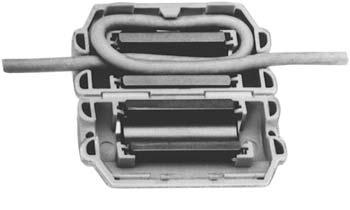Blanketing interference refers to the phenomenon of receiving radio signals on devices not designed to do so. In broadcast radio, this is defined for AM stations in part 73.88 as:
The licensee of each broadcast station is required to satisfy all reasonable complaints of blanketing interference within the 1 V/m contour.
And for FM stations, it is part 73.318:
Areas adjacent to the transmitting antenna that receive a signal with a strength of 115 dBu (562 mV/m) or greater will be assumed to be blanketed.
Any interference to any device with that signal contour is blanketing interference. 73.318 further states that:
permittees or licensees who either (1) commence program tests, or (2) replace their antennas, or (3) request facilities modifications and are issued a new construction permit must satisfy all complaints of blanketing interference which are received by the station during a one year period.
I have always taken a more pragmatic approach to interference complaints. Rather than pass the buck and tell the homeowner or business owner that it is not our (the radio station’s) problem, I’d go and try to help them out. Generally speaking, the interference problems are close to the transmitter site, so on the next trip to that site, I would bring RFI filters and my 25 years of RF experience and solve the problem. I would like to think this helps the station’s and the company’s image in the community.
Most of the problems are pretty easily solved, although once in a while, I have come on some head-scratchers. An AM station playing on the outlets in a guy’s garage, the mic cords on a church PA system, and an off switch on a blender, off all things. The Bare Naked Ladies had a line in the song Light up my Yard: “we can dance to the radio station that plays in our teeth.”
What I have found is to start with the simple stuff first, check the ground on the electrical service entrance panel. One might be surprised to find it disconnected, corroded, or missing completely. On more than one occasion, I fixed all of the RFI problems with a simple turn of the screw holding the ground wire to the grounding electrode. In my experience, this is the most common single failure point. A disconnected ground will cause the entire neutral wiring system to act like a giant AM antenna, with all sorts of bad outcomes.

Most often, telephone answering machines, cordless phones, and other devices powered by wall warts are suspect. Those devices do not have a path to ground. A few turns of all the wires coming and going from said device around a ferrite core such as a snap on TDK RFI EMI filter available from Mouser will take care of it. Mouser has several different versions available.
Occasionally, one needs to put on a detective hat and do some footwork. Mast mount TV antenna preamps can cause untold heartache and problems. One such incident involved the second harmonic of an FM station falling exactly on channel 11’s audio frequency. This was affecting several houses in a one-block area. I finally found the problem at one of the complainant’s houses when I pulled the TV out and found the preamp power supply. Unplugging it made all the problems go away (I hate Radio Shack).
Usually, the process of elimination will discover the problem and thereby reveal a solution. The aforementioned church incident was discovered after I began unplugging microphone cords from the back of the Mackie mixer in the choir loft. It turns out several mic lines were plugged into the back of the mixer, unused and unterminated, creating a large long receiving antenna on the cable shield, which happened to be aligned perfectly to pick up RF from an AM station.






Is the blanketing interference contour based on each individual transmitter, or, where multiple stations are colocated (and maybe are even combined into the same antenna), does it refer to the total sum of the powers of all stations added together?
Richard, the way the rules are written, it is based on each individual licensee. Normally, when I licensee applies for a license from a transmitter site for the first time, they will need to mitigate any blanketing interference within the blanketing interference contour (which depends on the ERP). Even after the station has been on the air for a long time, it is always a good idea to try and fix people’s issues with blanketing interference.
Possible up-coming project I’ll be watching is adding a 20 kW AM to a 50 kW AM facility.
One of the houses close to the site had the 50 kW station playing out of their fireplace insert after Dish installed their ‘dish’.
They’d show off their talking fireplace.
*Husband ended up building 3 of the block ATU buildings for the new 6-tower array when the sub didn’t show. Few years earlier the family went on a cruise after willing a contest from the station.
In the early 2010’s A 40 MW solar array went in next to the site. They had to bring in an RF specialist when their aiming controller started flaming from the RF into them. lol